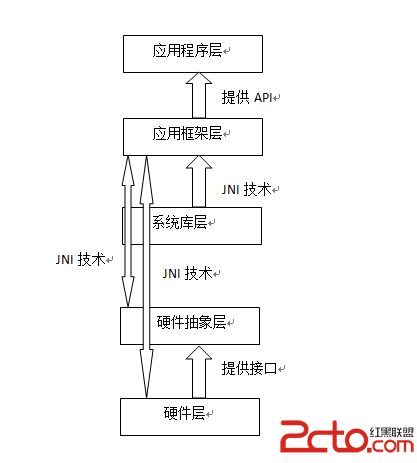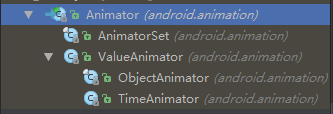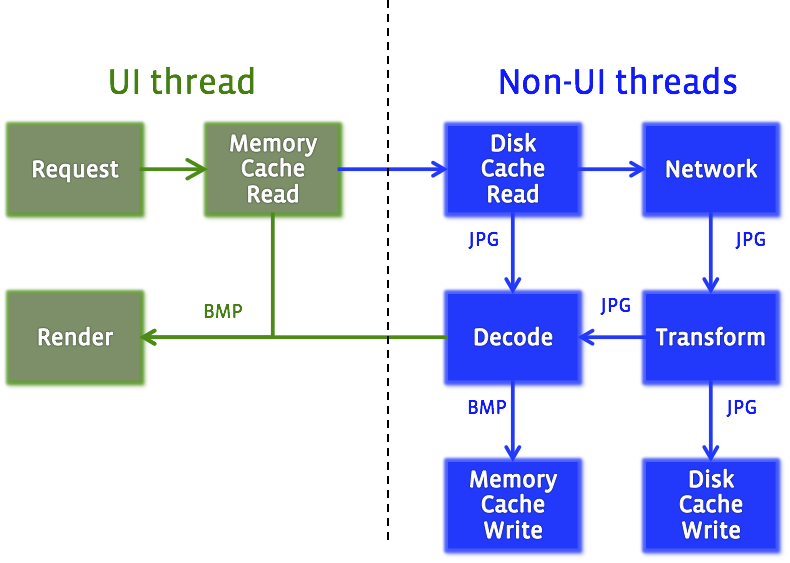編輯:關於Android編程
1.概念
HTTP 協議可能是現在 Internet 上使用得最多、最重要的協議了,越來越多的 Java 應用程序需要直接通過 HTTP 協議來訪問網絡資源。在 JDK 的 java.net 包中已經提供了訪問 HTTP 協議的基本功能:HttpURLConnection。但是對於大部分應用程序來說,JDK 庫本身提供的功能還不夠豐富和靈活。
除此之外,在Android中,androidSDK中集成了Apache的HttpClient模塊,用來提供高效的、最新的、功能豐富的支持 HTTP 協議工具包,並且它支持 HTTP 協議最新的版本和建議。使用HttpClient可以快速開發出功能強大的Http程序。
2.區別
HttpClient是個很不錯的開源框架,封裝了訪問http的請求頭,參數,內容體,響應等等,
HttpURLConnection是java的標准類,什麼都沒封裝,用起來太原始,不方便,比如重訪問的自定義,以及一些高級功能等。
URLConnection
HTTPClient
Proxies and SOCKS
Full support in Netscape browser, appletviewer, and applications (SOCKS: Version 4 only); no additional limitations from security policies.
Full support (SOCKS: Version 4 and 5); limited in applets however by security policies; in Netscape can't pick up the settings from the browser.
Authorization
Full support for Basic Authorization in Netscape (can use info given by the user for normal accesses outside of the applet); no support in appletviewer or applications.
Full support everywhere; however cannot access previously given info from Netscape, thereby possibly requesting the user to enter info (s)he has already given for a previous access. Also, you can add/implement additional authentication mechanisms yourself.
Methods
Only has GET and POST.
Has HEAD, GET, POST, PUT, DELETE, TRACE and OPTIONS, plus any arbitrary method.
Headers
Currently you can only set any request headers if you are doing a POST under Netscape; for GETs and the JDK you can't set any headers.
Under Netscape 3.0 you can read headers only if the resource was returned with a Content-length header; if no Content-length header was returned, or under previous versions of Netscape, or using the JDK no headers can be read.
Allows any arbitrary headers to be sent and received.
Automatic Redirection Handling
Yes.
Yes (as allowed by the HTTP/1.1 spec).
Persistent Connections
No support currently in JDK; under Netscape uses HTTP/1.0 Keep-Alive's.
Supports HTTP/1.0 Keep-Alive's and HTTP/1.1 persistence.
Pipelining of Requests
No.
Yes.
Can handle protocols other than HTTP
Theoretically; however only http is currently implemented.
No.
Can do HTTP over SSL (https)
Under Netscape, yes. Using Appletviewer or in an application, no.
No (not yet).
Source code available
No.
Yes.
3.案例
URLConnection
String urlAddress = "http://192.168.1.102:8080/AndroidServer/login.do";
URL url;
HttpURLConnection uRLConnection;
public UrlConnectionToServer(){
}
//向服務器發送get請求
public String doGet(String username,String password){
String getUrl = urlAddress + "?username="+username+"&password="+password;
try {
url = new URL(getUrl);
uRLConnection = (HttpURLConnection)url.openConnection();
InputStream is = uRLConnection.getInputStream();
BufferedReader br = new BufferedReader(new InputStreamReader(is));
String response = "";
String readLine = null;
while((readLine =br.readLine()) != null){
//response = br.readLine();
response = response + readLine;
}
is.close();
br.close();
uRLConnection.disconnect();
return response;
} catch (MalformedURLException e) {
e.printStackTrace();
return null;
} catch (IOException e) {
e.printStackTrace();
return null;
}
}
//向服務器發送post請求
public String doPost(String username,String password){
try {
url = new URL(urlAddress);
uRLConnection = (HttpURLConnection)url.openConnection();
uRLConnection.setDoInput(true);
uRLConnection.setDoOutput(true);
uRLConnection.setRequestMethod("POST");
uRLConnection.setUseCaches(false);
uRLConnection.setInstanceFollowRedirects(false);
uRLConnection.setRequestProperty("Content-Type", "application/x-www-form-urlencoded");
uRLConnection.connect();
DataOutputStream out = new DataOutputStream(uRLConnection.getOutputStream());
String content = "username="+username+"&password="+password;
out.writeBytes(content);
out.flush();
out.close();
InputStream is = uRLConnection.getInputStream();
BufferedReader br = new BufferedReader(new InputStreamReader(is));
String response = "";
String readLine = null;
while((readLine =br.readLine()) != null){
//response = br.readLine();
response = response + readLine;
}
is.close();
br.close();
uRLConnection.disconnect();
return response;
} catch (MalformedURLException e) {
e.printStackTrace();
return null;
} catch (IOException e) {
e.printStackTrace();
return null;
}
}
String urlAddress = "http://192.168.1.102:8080/qualityserver/login.do";
public HttpClientServer(){
}
public String doGet(String username,String password){
String getUrl = urlAddress + "?username="+username+"&password="+password;
HttpGet httpGet = new HttpGet(getUrl);
HttpParams hp = httpGet.getParams();
hp.getParameter("true");
//hp.
//httpGet.setp
HttpClient hc = new DefaultHttpClient();
try {
HttpResponse ht = hc.execute(httpGet);
if(ht.getStatusLine().getStatusCode() == HttpStatus.SC_OK){
HttpEntity he = ht.getEntity();
InputStream is = he.getContent();
BufferedReader br = new BufferedReader(new InputStreamReader(is));
String response = "";
String readLine = null;
while((readLine =br.readLine()) != null){
//response = br.readLine();
response = response + readLine;
}
is.close();
br.close();
//String str = EntityUtils.toString(he);
System.out.println("========="+response);
return response;
}else{
return "error";
}
} catch (ClientProtocolException e) {
// TODO Auto-generated catch block
e.printStackTrace();
return "exception";
} catch (IOException e) {
// TODO Auto-generated catch block
e.printStackTrace();
return "exception";
}
}
public String doPost(String username,String password){
//String getUrl = urlAddress + "?username="+username+"&password="+password;
HttpPost httpPost = new HttpPost(urlAddress);
List params = new ArrayList();
NameValuePair pair1 = new BasicNameValuePair("username", username);
NameValuePair pair2 = new BasicNameValuePair("password", password);
params.add(pair1);
params.add(pair2);
HttpEntity he;
try {
he = new UrlEncodedFormEntity(params, "gbk");
httpPost.setEntity(he);
} catch (UnsupportedEncodingException e1) {
// TODO Auto-generated catch block
e1.printStackTrace();
}
HttpClient hc = new DefaultHttpClient();
try {
HttpResponse ht = hc.execute(httpPost);
//連接成功
if(ht.getStatusLine().getStatusCode() == HttpStatus.SC_OK){
HttpEntity het = ht.getEntity();
InputStream is = het.getContent();
BufferedReader br = new BufferedReader(new InputStreamReader(is));
String response = "";
String readLine = null;
while((readLine =br.readLine()) != null){
//response = br.readLine();
response = response + readLine;
}
is.close();
br.close();
//String str = EntityUtils.toString(he);
System.out.println("=========&&"+response);
return response;
}else{
return "error";
}
} catch (ClientProtocolException e) {
// TODO Auto-generated catch block
e.printStackTrace();
return "exception";
} catch (IOException e) {
// TODO Auto-generated catch block
e.printStackTrace();
return "exception";
}
}
resp.setContentType("text/json");
resp.setCharacterEncoding("UTF-8");
toDo = new ToDo();
List list = new ArrayList();
list = toDo.queryUsers(mySession);
String body;
//設定JSON
JSONArray array = new JSONArray();
for(UserBean bean : list)
{
JSONObject obj = new JSONObject();
try
{
obj.put("username", bean.getUserName());
obj.put("password", bean.getPassWord());
}catch(Exception e){}
array.add(obj);
}
pw.write(array.toString());
System.out.println(array.toString());
String urlAddress = "http://192.168.1.102:8080/qualityserver/result.do";
String body =
getContent(urlAddress);
JSONArray array = new JSONArray(body);
for(int i=0;i map = new HashMap();
try {
userName = obj.getString("username");
passWord = obj.getString("password");
} catch (JSONException e) {
e.printStackTrace();
}
map.put("username", userName);
map.put("password", passWord);
listItem.add(map);
}
} catch (Exception e) {
// TODO Auto-generated catch block
e.printStackTrace();
}
if(sb!=null)
{
showResult.setText("用戶名和密碼信息:");
showResult.setTextSize(20);
} else
extracted();
//設置adapter
SimpleAdapter simple = new SimpleAdapter(this,listItem,
android.R.layout.simple_list_item_2,
new String[]{"username","password"},
new int[]{android.R.id.text1,android.R.id.text2});
listResult.setAdapter(simple);
listResult.setOnItemClickListener(new OnItemClickListener() {
@Override
public void onItemClick(AdapterView parent, View view,
int position, long id) {
int positionId = (int) (id+1);
Toast.makeText(MainActivity.this, "ID:"+positionId, Toast.LENGTH_LONG).show();
}
});
}
private void extracted() {
showResult.setText("沒有有效的數據!");
}
//和服務器連接
private String getContent(String url)throws Exception{
StringBuilder sb = new StringBuilder();
HttpClient client =new DefaultHttpClient();
HttpParams httpParams =client.getParams();
HttpConnectionParams.setConnectionTimeout(httpParams, 3000);
HttpConnectionParams.setSoTimeout(httpParams, 5000);
HttpResponse response = client.execute(new HttpGet(url));
HttpEntity entity =response.getEntity();
if(entity !=null){
BufferedReader reader = new BufferedReader(new InputStreamReader
(entity.getContent(),"UTF-8"),8192);
String line =null;
while ((line= reader.readLine())!=null){
sb.append(line +"\n");
}
reader.close();
}
return sb.toString();
}  Android Framework應用框架層和HAL硬件抽象層以及Linux Kernel底層之間的關系
Android Framework應用框架層和HAL硬件抽象層以及Linux Kernel底層之間的關系
Android應用框架層和硬件抽象層以及底層之間的關系1. JNI技術:(1).JNI技術簡單的說就是在本地Java語言聲明本地方法和加載動態鏈接庫(.so文件)(2).
 Android 動畫系列之屬性(Property)動畫詳解
Android 動畫系列之屬性(Property)動畫詳解
前言今天有時間來繼續寫寫屬性動畫。簡介眾所周知,屬性動畫是Android3.0版本開始的,一個東西的推出肯定是有它的道理的,那為什麼前面已經有逐幀和補間動畫了還要推出屬性
 msm8909+android5.1 device tree(dt) 設備樹組成和編譯
msm8909+android5.1 device tree(dt) 設備樹組成和編譯
1.Device tree設備樹概述設備樹包含DTC(device treecompiler),DTS(device treesource和DTB(device tree
 Fresco-FaceBook推出的Android圖片加載庫
Fresco-FaceBook推出的Android圖片加載庫
在Android設備上面,快速高效的顯示圖片是極為重要的。過去的幾年裡,我們在如何高效的存儲圖像這方面遇到了很多問題。圖片太大,但是手機的內存卻很小。每一個像素的R、G、